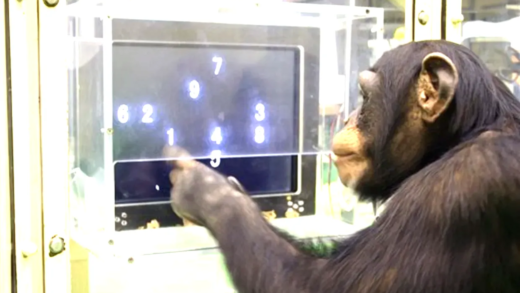This article explores miscellaneous birds, highlighting their unique adaptations, habitats, and behaviors. It emphasizes the importance of biodiversity for bird survival and discusses conservation efforts to protect these rare species, showcasing their vital roles in ecosystems.
Examples of Miscellaneous Birds
Miscellaneous birds come in many shapes and sizes, often exhibiting traits that set them apart from typical avian species. These unusual birds pique the curiosity of birdwatchers and nature enthusiasts alike. Here are a few fascinating examples:
- Kiwi: Native to New Zealand, the kiwi is a flightless bird known for its long beak and sensitive nostrils, allowing it to forage for insects and worms underground.
- Hummingbird: These tiny birds can hover in mid-air thanks to their rapid wing beats. Their vibrant colors and incredible agility make them a marvel of nature.
- Penguin: Adapted to life in the water, penguins are flightless birds that excel at swimming. Their unique body structure allows them to move swiftly through the ocean.
- Secretary Bird: This large, terrestrial bird of prey is known for its long legs and ability to hunt snakes. Its striking appearance and hunting techniques make it stand out.
Identifying these unique bird species helps us appreciate the diversity within the avian world. Each of these miscellaneous birds plays a significant role in their respective ecosystems, contributing to the overall health of the environment.
Unique Adaptations of Strange Birds
Unique adaptations are what make strange birds fascinating. These adaptations enable them to thrive in their specific habitats. For instance:
- Woodpecker: Equipped with a specialized beak and a reinforced skull, woodpeckers can peck on hard surfaces without injury.
- Flamingo: Their long legs and necks allow them to wade into deeper waters for food. They filter-feed on small organisms using their unique beak structure.
- Albatross: Known for their impressive wingspan, albatrosses can glide over the ocean for hours, conserving energy while searching for food.
These adaptations are not merely physical but also behavioral. For example, some birds have developed intricate mating dances to attract partners, showcasing their unique characteristics.
Habitats of Uncommon Birds
Understanding the habitats of uncommon birds is crucial for conservation efforts. These birds often inhabit specific environments that support their unique lifestyles. Consider the following habitats:
- Tropical Rainforests: Home to colorful species like the toucan and parrot, these ecosystems provide abundant food and nesting sites.
- Wetlands: Birds like the heron and ibis thrive in wetlands, where they can find fish and aquatic invertebrates.
- Deserts: Adapted to harsh conditions, birds like the roadrunner and the cactus wren have unique survival strategies in arid environments.
Each habitat presents challenges and opportunities for its avian inhabitants. By studying these unique environments, we can better understand the needs of these birds and how to protect their ecosystems.
Biodiversity and Bird Survival
Biodiversity is vital for the survival of bird species. A diverse ecosystem ensures stability and resilience against environmental changes. Here’s why biodiversity matters:
- Food Security: A variety of bird species contributes to a balanced food web, supporting both predator and prey relationships.
- Pollination: Many birds play a role in pollinating plants, which is essential for fruit and seed production.
- Habitat Health: Diverse bird populations help maintain the health of their habitats through seed dispersal and pest control.
Ultimately, preserving avian biodiversity is crucial for maintaining healthy ecosystems. Efforts to protect various bird species contribute to the overall stability of our planet’s environments.
The Ecological Role of Miscellaneous Birds
Miscellaneous birds play vital roles in maintaining ecological balance. These unique bird species contribute significantly to their ecosystems in various ways:
- Pollinators: Birds like hummingbirds and sunbirds are essential for pollinating flowers, which in turn supports plant reproduction and biodiversity.
- Seed Dispersers: Many birds, such as the fruit-eating toucan, help disperse seeds, promoting plant growth and regeneration in their habitats.
- Pest Control: Birds of prey, like hawks and owls, regulate rodent populations, contributing to the health of their ecosystems by controlling pest species.
- Food Source: Miscellaneous birds serve as a food source for larger predators, thus sustaining the food web within their environments.
Understanding the ecological roles of these unusual birds is crucial for conservation efforts. Protecting their habitats ensures the stability of the ecosystems they support.
Quirky Behaviors of Unique Birds
Uncommon bird species often exhibit fascinating behaviors that set them apart from more familiar types. Here are some interesting examples:
- Dance Rituals: The superb lyrebird showcases elaborate mating dances, which include mimicking sounds from their environment, such as chainsaws or camera clicks.
- Tool Use: New Caledonian crows are known for their remarkable ability to use sticks to extract insects from tree bark, demonstrating advanced problem-solving skills.
- Social Interactions: African grey parrots exhibit complex social behaviors, including vocal mimicry and forming strong bonds with their mates and flock members.
These unique behaviors not only highlight the intelligence and adaptability of these birds but also enhance their survival strategies in the wild.
Conservation Initiatives for Unique Birds
Conservation of unique birds is crucial for preserving biodiversity. Various initiatives focus on protecting these rare species:
- Habitat Protection: Organizations work to conserve natural habitats, ensuring that birds have safe environments to thrive.
- Breeding Programs: Captive breeding programs aim to increase populations of endangered birds, such as the California condor.
- Public Awareness: Educational campaigns raise awareness about the importance of conserving bird species and their habitats.
By supporting these conservation efforts, we can contribute to the protection of unique birds and their ecosystems.
Miscellaneous Birds and Avian Diversity
Miscellaneous birds represent a crucial component of avian diversity. They enrich the overall tapestry of bird life, showcasing the vast array of adaptations and behaviors. Here’s how they fit into the bigger picture:
- Genetic Diversity: The variety of species contributes to the genetic diversity essential for resilience against diseases and environmental changes.
- Ecological Functions: Each bird species plays specific roles in their ecosystems, from pollination to pest control, ensuring ecological balance.
- Conservation Synergy: Protecting miscellaneous birds also supports the conservation of other species, creating a ripple effect that enhances overall biodiversity.
In summary, understanding the role of miscellaneous birds within avian diversity helps us appreciate their significance in maintaining healthy ecosystems.
Uncommon Bird Behaviors
Unique bird behaviors are often as intriguing as their physical traits. Some species have developed remarkable habits that not only help them survive but also captivate the attention of bird enthusiasts. Here are a few examples of unusual behaviors:
- Vocal Mimicry: Birds like the lyrebird can imitate a range of sounds, from other birds to human-made noises, showcasing their impressive vocal abilities.
- Altruism: Some species, such as the African grey parrot, demonstrate social behaviors like sharing food and helping each other during tough times, indicating complex social structures.
- Camouflage Techniques: The Potoo bird is a master of disguise, often perching perfectly still against tree bark to avoid predators.
These behaviors not only highlight the adaptability of unique birds but also play vital roles in their survival strategies, making them essential to their respective ecosystems.
Conservation of Unique Bird Species
Efforts to conserve unique birds are critical for maintaining biodiversity. Many organizations are actively engaged in protecting these species through various initiatives. Important conservation efforts include:
- Protected Areas: Establishing wildlife reserves and national parks ensures that birds have safe habitats to live and breed.
- Restoration Projects: Initiatives aimed at restoring degraded habitats, such as wetlands and forests, provide essential resources for birds.
- Community Involvement: Engaging local communities in conservation practices helps raise awareness and fosters a sense of stewardship for local bird populations.
By supporting these efforts, we can help secure a future for unique birds and the ecosystems they inhabit, ensuring their survival for generations to come.
Miscellaneous Birds and Avian Diversity
Miscellaneous birds are a vital component of avian diversity, contributing to the richness of ecosystems worldwide. Their unique adaptations and behaviors enrich the biological tapestry of our planet. Here’s how they fit into the larger context of avian diversity:
- Species Interdependence: The various roles that different bird species play in ecosystems highlight the interconnectedness of life.
- Genetic Variety: High genetic diversity among bird populations enhances resilience against diseases and environmental shifts, supporting overall ecosystem health.
- Conservation Impact: Protecting miscellaneous birds helps to safeguard other species and their habitats, amplifying conservation efforts.
Understanding the importance of miscellaneous birds within avian diversity not only fosters appreciation for their roles but also emphasizes the necessity of conservation initiatives aimed at preserving their existence.





Comments are closed.